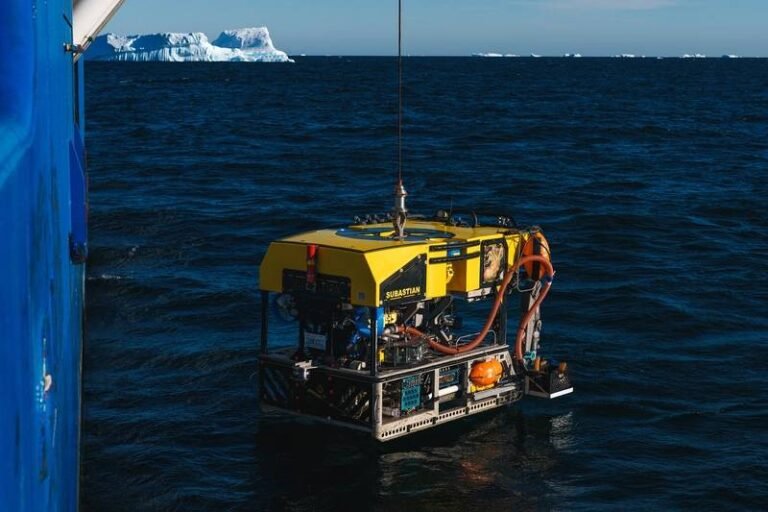An International Team Discovers Flourishing Ecosystems in the Bellingshausen Sea
An international team aboard Schmidt Ocean Institute’s R/V Falkor (too), recently conducted groundbreaking research in the Bellingshausen Sea. Their expedition took an unexpected turn when an iceberg the size of Chicago, named A-84, broke away from the George VI Ice Shelf, exposing a previously inaccessible area of the seafloor.
Arriving at the newly exposed seafloor on January 25, the team embarked on the first-ever investigation of an area once covered by a floating ice shelf. This comprehensive study focused on the geology, physical oceanography, and biology of the region, revealing flourishing ecosystems at depths of up to 1300 meters.
Using Schmidt Ocean Institute’s remotely operated vehicle, ROV SuBastian, the team made remarkable discoveries, including large corals, sponges, icefish, giant sea spiders, and octopus. The abundance of life in this previously inaccessible environment suggests the presence of several new species.
Deep-sea ecosystems in Antarctica typically rely on surface nutrients slowly descending to the seafloor. However, the ecosystems beneath the ice sheet have been isolated from surface nutrients by the thick ice cover for centuries. The team hypothesizes that ocean currents play a crucial role in sustaining life in this unique environment.
In addition to studying the biodiversity of the region, the team collected crucial data on the past behavior of the Antarctic ice sheet, which has been experiencing significant shrinkage due to climate change. Autonomous gliders were deployed to investigate the impacts of glacial meltwater on the physical and chemical properties of the area, revealing high biological productivity and a strong meltwater flow from the George IV ice shelf.
The expedition was part of Challenger 150, a global initiative focused on deep-sea biological research, endorsed by the Intergovernmental Oceanographic Commission of UNESCO (IOC/UNESCO) as an Ocean Decade Action. The team’s discoveries offer valuable insights into the functioning of ecosystems beneath floating ice sheets and highlight the importance of further research in this rapidly changing environment.

